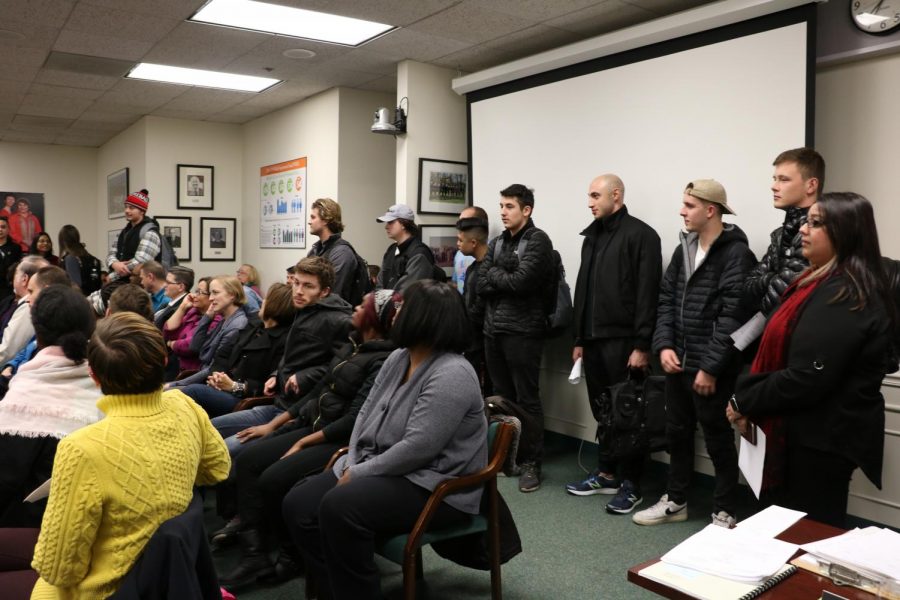Staff Editorial: Student wages improve . . . kind of
Students gathered to support the student wage initiative in the November 2019 meeting of the Board of Trustees.
September 20, 2019
This Editorial is the opinion of the entire OCCurrence Editorial Board.
Community colleges have been crucial in regards to their affordability and devotion to lifelong learning: components that many other colleges do not take into account. In this way community colleges have been accessible to all individuals, not purely the privileged members of society.
Oakton has made it a mission to ensure that all students have access to higher education through their commitment “to diversity, cultural competence, and achieving equity in student outcomes.”
In the 2018-2019 school year, SGA Senator Joshua Rodriguez began the student wage initiative. This initiative aimed to increase the current wages of student employees, which was a staggering $8.25 at the lowest tier of the four-tiered system.
According to Rodriguez, a fundamental goal of the initiative was to collaborate with the Oakton administration in order to develop a more equitable form of employment for existing student employees.
“We are always working together to improve Oakton, in this case by being more equitable to the student employees [who] help to keep this campus running as smooth as it does,” Rodriguez stated last year to The OCCurrence.
After a year of petitioning for action, the school has enacted an increase in wages. Effective Oct. 4, students will be receiving a minimum wage between $12-13, depending on their position.
However, this wage initiative has come with complications. Although students will be receiving a higher wage, there are also greater restrictions on student employment: students will now be limited to 20 hours a week, as opposed to a previous 25; and students are required to have six credits as opposed to a previous number of three.
Though the wages of student employees have increased, the budget has not been adapted to account for this change. The aggregate sum of wages from students who received a minimum wage of $8.25 would likely be similar, if not more, than the aggregate sum of wages of students who are receiving the new wage.
While students will be working less hours, departments will still have to cut students because of the lack of funding. Therefore, individual students will be making more money, but collectively, departments will be spending less on student employees. In this way, the student wage increase has not actually resulted in a net increase for all student employees.
A primary component of accessibility is affordability. If students, particularly those of lower socioeconomic status, cannot fund their education, they will not be able to continue their learning. This is purely one of the reasons student employment is so vital: it allows students a means to ensure their education while simultaneously providing a positive contribution to the Oakton community.
It is also critical to note that it is not Oakton’s job to randomly provide students with money. It is, however, a primary mission of the college to supply an accessible education to all students, and this accessibility is intrinsically intertwined with affordability. If Oakton is truly committed to this, and to the student wage increase, it is critical that the administration in the future takes this into account.


